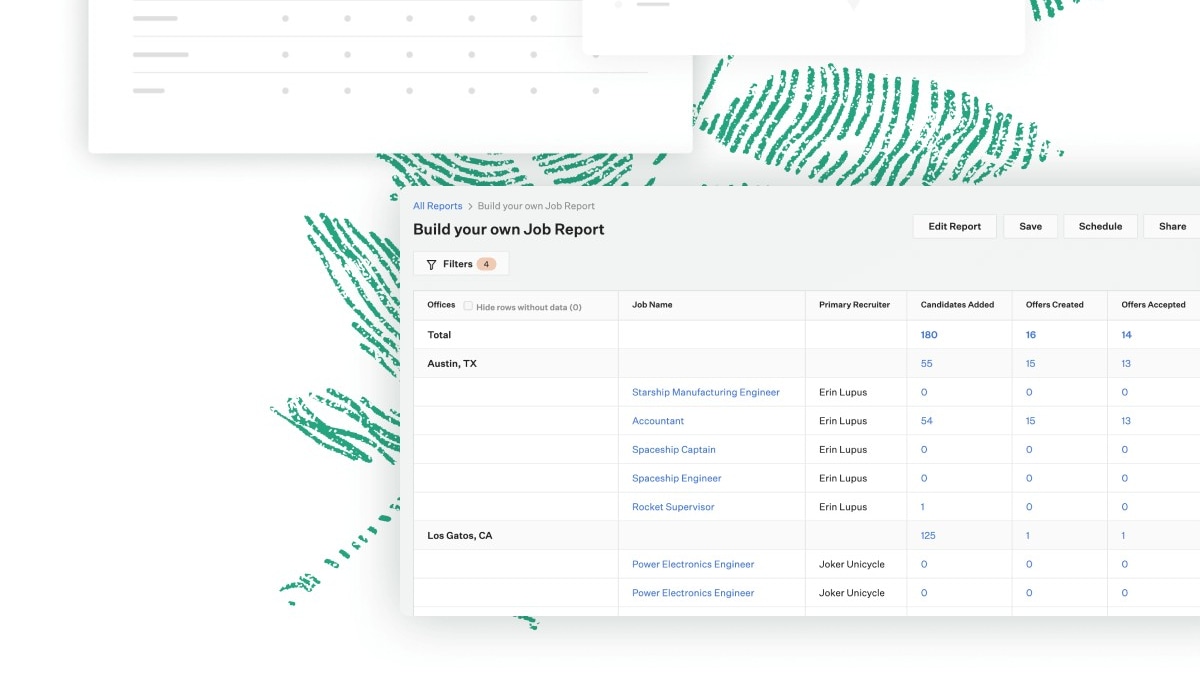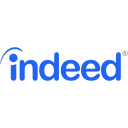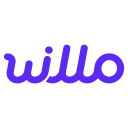Workable vs Greenhouse: Which recruiting software is the best for your business?
- 01Workable vs Greenhouse: overview
- 02What's the difference between Workable and Greenhouse?
- 03Workable pros and cons
- 04Greenhouse pros and cons
- 05Workable compared to Greenhouse
- 06Greenhouse compared to Workable
- 07Features comparison
- 08Workable vs Greenhouse: Which is the best for your business?
- 09Promotions on Applicant Tracking software
- 10Alternatives to Workable & Greenhouse
Save up to $1,507 on Workable
Save up to $1,507 on Workable
Recruitment processes are critical to the growth and success of any company, helping to attract, engage, and hire top talent. Utilizing advanced recruiting software can significantly streamline your hiring process, enhance candidate experience, and improve collaboration among hiring teams.
But to truly enhance your recruitment efforts, selecting the software that best fits your organization's needs is crucial. In this article, we compare two leading solutions—Workable and Greenhouse. By exploring their key features, use cases, and main differences, you can make an informed decision on which platform is most suitable for your hiring objectives. Let’s dive in!
Workable vs Greenhouse: overview
Workable and Greenhouse are two standout contenders in the realm of recruiting software platforms, each bringing unique strengths to meet diverse organizational needs.
Workable is renowned for its intuitive interface and ease of use. It offers a streamlined approach to managing recruitment workflows, making it an excellent choice for small to medium-sized businesses or those new to using recruitment software. On the other hand, Greenhouse provides a comprehensive suite of features, including advanced recruiting analytics, robust integration capabilities, and a strong emphasis on creating structured hiring processes. It caters to a wide range of users, from fast-growing startups to large enterprises, and is known for its scalability and support for complex hiring needs.
Now, let's delve into the Workable vs. Greenhouse comparison to assist you in making an informed decision when choosing the right recruiting software for your specific requirements.
What's the difference between Workable and Greenhouse?


Workable and Greenhouse are both highly regarded recruiting platforms, each offering distinct features and functionalities tailored to different hiring needs. Understanding the differences between these two can help you decide which is the best fit for your organization.
Let’s start with the user interface and ease of use. Workable is known for its intuitive design, making it easy for teams to adopt and integrate into their recruitment processes. It is particularly friendly for users who may not have extensive experience with recruitment software. Greenhouse, while also user-friendly, is a bit more complex due to its comprehensive suite of features. It is designed with an eye towards larger organizations that may require more detailed workflows and deeper analytics.
In terms of recruiting analytics, Greenhouse tends to be more robust. It offers detailed reports and insights that help companies optimize their hiring processes. These analytics cover everything from the effectiveness of different sourcing strategies to the performance of interview panels. Workable, while providing useful analytics, is generally considered to be less extensive in this area but sufficient for small to medium-sized businesses.
Another key difference lies in their integration capabilities. Greenhouse provides a wide array of integrations with other HR technology tools, which is beneficial for large organizations looking to streamline various aspects of their HR systems. Workable also offers a good range of integrations but with a focus on simplicity and ease of use, which might be more appealing to smaller businesses or those without a dedicated IT team.
Lastly, pricing structures between the two platforms vary. Workable tends to be more straightforward and potentially more cost-effective for smaller organizations, offering per-job or per-user pricing that scales with the size of the company. Greenhouse, on the other hand, typically requires a more customized pricing approach, which can be higher but justifiable for larger firms or those with more complex hiring needs.
Workable pros and cons
What are the advantages of Workable?
- User-friendly interface: Workable has an intuitive interface that makes it easy for recruiters and hiring managers to navigate through the platform. This user-friendliness streamlines the recruiting process and saves time.
- Broad integrations: Workable integrates with various other tools and platforms such as LinkedIn, Indeed, and Slack, allowing for a seamless recruiting experience. These integrations enhance efficiency and facilitate communication between team members.
- Customizable workflows: Workable allows users to create and customize recruitment workflows according to their specific needs. This flexibility enables organizations to tailor the platform to fit their unique hiring processes.
- Candidate collaboration: Workable facilitates collaboration among team members involved in the hiring process. It allows for feedback sharing, candidate rating, and communication within the platform, promoting teamwork and informed decision-making.
- Reporting and analytics: Workable provides detailed reporting and analytics features that help users track key recruitment metrics, identify bottlenecks, and optimize their hiring strategies. These insights enable organizations to make data-driven decisions and continuously improve their recruiting efforts.
What are the disadvantages of Workable?
- Cost: While Workable offers various pricing plans to accommodate different budgets, some users may find the cost prohibitive, especially for small businesses or startups with limited resources.
- Limited customization: Despite offering customizable workflows, some users may find Workable's customization options somewhat limited compared to other recruiting software solutions.
- Learning curve: While Workable's interface is user-friendly, there may still be a learning curve for new users, particularly those who are not familiar with recruiting software. Training and onboarding may be necessary to maximize the platform's effectiveness.
- Email integration limitations: While Workable integrates with email services like Gmail and Outlook, some users may find the email integration functionality lacking in comparison to dedicated email management tools.
- Customer support: While Workable provides customer support, some users may find it lacking in responsiveness or depth compared to other software providers. This could be a drawback for organizations that require extensive support or assistance during implementation and ongoing usage.
Compare Workable to other tools
Greenhouse pros and cons
What are the advantages of Greenhouse?
- Advanced customization: Greenhouse offers extensive customization options, allowing users to tailor the platform to fit their specific recruiting processes and preferences. This flexibility enables organizations to create workflows that align with their unique needs.
- Robust reporting and analytics: Greenhouse provides powerful reporting and analytics features that enable users to track key recruitment metrics, analyze hiring trends, and gain valuable insights into their hiring processes. These insights help organizations make data-driven decisions and optimize their recruiting strategies.
- Integration ecosystem: Greenhouse integrates with a wide range of third-party tools and platforms, including job boards, background check services, and HRIS systems. This extensive integration ecosystem enhances efficiency and streamlines the recruiting workflow by connecting Greenhouse with other essential tools.
- Candidate experience: Greenhouse offers a user-friendly and engaging candidate experience, which can help organizations attract top talent and enhance their employer brand. Features such as branded career portals, personalized communications, and mobile-friendly applications contribute to a positive candidate experience.
- Excellent customer support: Greenhouse is known for its responsive and knowledgeable customer support team. Users can access help resources, participate in training sessions, and receive assistance from dedicated support representatives, ensuring a smooth experience with the platform.
What are the disadvantages of Greenhouse?
- Pricing: Greenhouse's pricing may be prohibitive for some organizations, particularly small businesses or startups with limited budgets. The platform's pricing structure is based on the size of the organization and the desired feature set, which can result in higher costs for larger companies or those requiring advanced functionality.
- Complexity: While Greenhouse offers advanced customization options, some users may find the platform complex or overwhelming, especially during the initial setup and configuration process. Training and onboarding may be necessary to fully leverage Greenhouse's capabilities.
- Implementation time: Implementing Greenhouse can take time and resources, particularly for organizations with complex recruiting processes or existing data migration needs. The implementation process may require careful planning and coordination to ensure a smooth transition to the new platform.
- Limited email integration: Greenhouse's email integration capabilities may be limited compared to dedicated email management tools. While users can sync email communications with Greenhouse, some may find the functionality lacking in comparison to other email platforms.
- Lack of native assessments: Unlike some other recruiting software solutions, Greenhouse does not offer native assessment tools for evaluating candidates' skills or abilities. Users may need to integrate third-party assessment providers or use alternative methods for candidate evaluation, which could add complexity to the recruiting process.
Workable compared to Greenhouse
Workable and Greenhouse are both popular recruiting software solutions offering distinct advantages. Workable stands out for its intuitive interface and broad integrations, facilitating a seamless recruiting experience. It offers customizable workflows and robust reporting features, empowering users to tailor their processes and make data-driven decisions. However, Workable may be more suitable for smaller businesses due to its affordability.
On the other hand, Greenhouse excels in advanced customization and extensive integration capabilities, catering to larger organizations with complex hiring needs. While Greenhouse may require a longer implementation time and higher costs, its robust features and excellent customer support make it a preferred choice for many enterprises.
Is Workable better than Greenhouse?
Choosing between Workable and Greenhouse largely depends on the specific needs of an organization. For smaller companies, Workable provides a cost-effective, user-friendly platform that is easy to deploy and manage, making it ideal for businesses with limited HR departments.
In contrast, Greenhouse is favored by larger corporations due to its extensive customization options and powerful integration capabilities, which are essential for handling complex hiring processes. Although Greenhouse comes with a steeper learning curve and higher initial costs, the long-term benefits of its sophisticated functionality often justify the investment for organizations aiming to scale their workforce efficiently.
What is Workable best used for?
Workable is best used for streamlining the recruitment process for businesses of all sizes. Its user-friendly interface simplifies job posting, candidate tracking, and collaboration among hiring teams. With customizable workflows and extensive integrations, Workable adapts to various industries and hiring needs. It excels in candidate sourcing, offering tools to attract top talent and manage applications efficiently.
Workable's reporting and analytics capabilities enable data-driven decision-making, optimizing recruitment strategies over time. Whether for startups seeking simplicity or larger enterprises in need of scalable solutions, Workable serves as a comprehensive platform to attract, evaluate, and hire the best candidates for any role.
Can Workable replace Greenhouse?
While Workable offers robust features for recruitment, it may not entirely replace Greenhouse for every organization. Workable excels in user-friendly interface, customizable workflows, and affordability, making it suitable for smaller businesses or those prioritizing simplicity. However, Greenhouse stands out with advanced customization, extensive integrations, and comprehensive candidate evaluation tools, catering to larger enterprises with complex hiring needs.
While Workable may serve as a viable alternative for some, particularly for cost-conscious organizations, Greenhouse's depth and scalability make it indispensable for those requiring advanced functionality and seamless integration with other HR systems.
Is Workable cheaper than Greenhouse?
Determining whether Workable is cheaper than Greenhouse depends on various factors such as company size, required features, and usage frequency. Workable generally offers more affordable pricing plans, making it an attractive option for smaller businesses or startups with limited budgets. However, Greenhouse's pricing structure varies based on organizational needs and may include additional costs for advanced features or integrations.
While Workable may be more cost-effective for some organizations, larger enterprises or those requiring extensive customization and integration capabilities may find the investment in Greenhouse worthwhile despite its higher initial costs.
Is there a better Applicant Tracking software than Workable?
When assessing recruiting software options, it's essential to consider whether there might be a better fit for your specific hiring needs.
Some notable alternatives to Workable in the recruiting software space include Greenhouse, Remotive, Ashby, JazzHR, and iCIMS.
The choice of recruiting software depends on your organization's unique hiring objectives, team size, and workflow requirements. While Workable offers user-friendly features and affordability, other tools may provide more advanced customization, integrations, or specialized solutions tailored to your recruitment strategy.
20% off the Standard or Premier plan for the first year on Workable
Get 20% off the Standard or Premier plan for the first year on Workable and up to $1,507 savings with Secret.
Greenhouse compared to Workable
Greenhouse and Workable are leading recruiting software platforms, each with distinct strengths. Greenhouse excels in advanced customization, offering tailored workflows and extensive integration capabilities suitable for larger enterprises with complex hiring needs. Its robust reporting and analytics empower data-driven decision-making, while its candidate evaluation tools enhance the hiring process. However, Greenhouse's pricing may be prohibitive for smaller businesses.
In contrast, Workable stands out for its intuitive interface and affordability, making it ideal for startups or smaller organizations seeking simplicity. While Workable lacks some of Greenhouse's advanced features, its broad integrations and user-friendly design make it a popular choice for businesses of all sizes.
Is Greenhouse better than Workable?
Determining whether Greenhouse is superior to Workable depends on the organizational requirements and the scale of hiring operations. Greenhouse provides a comprehensive suite that caters well to larger businesses that require sophisticated hiring frameworks and detailed process customizations. Its superior data analytics and extensive candidate evaluation tools are particularly advantageous for enterprises focused on optimizing every stage of the recruitment cycle.
Although this comes at a higher cost, the investment can be worthwhile for those needing a high degree of automation and deep integrations with other systems. For organizations looking to enhance their recruitment strategies comprehensively, Greenhouse presents a compelling option.
What is Greenhouse best used for?
Greenhouse is best used for streamlining the hiring process for medium to large enterprises with complex recruitment needs. Its advanced customization options allow organizations to tailor workflows and automate tasks, optimizing efficiency. Greenhouse excels in candidate evaluation, offering tools for structured interviewing, assessments, and collaborative feedback. Its extensive integration ecosystem connects with various HR systems, job boards, and background check services, facilitating seamless data management.
Greenhouse prioritizes candidate experience, providing branded career portals and personalized communications to attract top talent. Overall, Greenhouse serves as a comprehensive solution for organizations seeking to elevate their recruiting strategies and build high-performing teams.
Can Greenhouse replace Workable?
Whether Greenhouse can entirely replace Workable depends on the specific needs and preferences of the organization. Greenhouse excels in advanced customization, extensive integration capabilities, and comprehensive candidate evaluation tools, making it a preferred choice for medium to large enterprises with complex hiring requirements. While Greenhouse may offer more advanced features, Workable stands out for its user-friendly interface, affordability, and broad integrations, making it suitable for startups or smaller organizations prioritizing simplicity.
While Greenhouse may serve as a viable alternative, particularly for organizations requiring advanced functionality, the decision ultimately hinges on evaluating which platform best aligns with the organization's unique recruiting objectives and workflow preferences.
Is Greenhouse cheaper than Workable?
Determining whether Greenhouse is cheaper than Workable depends on various factors such as company size, required features, and usage frequency. Greenhouse typically caters to medium to large enterprises with more complex hiring needs and offers pricing plans tailored to suit those requirements.
On the other hand, Workable tends to be more affordable, making it a popular choice for startups and small to medium-sized businesses. While Greenhouse may offer more advanced features and customization options, Workable's pricing structure may be more suitable for organizations with limited budgets.
Is there a better Recruitment software than Greenhouse?
When evaluating recruiting software options, it's essential to consider whether there might be a better fit for your specific hiring needs.
Some notable alternatives to Greenhouse in the recruiting software space include Workable, Freshteam, ZipRecruiter, Breezy, and JobDiva.
The choice of recruiting software depends on your organization's unique hiring objectives, team size, and workflow requirements. While Greenhouse offers advanced customization and extensive integrations, other tools may provide more user-friendly interfaces, affordability, or specialized solutions tailored to your recruitment strategy.
Features comparison
Workable and Greenhouse Offer Equally Efficient Collaborative Hiring Systems

Both Workable and Greenhouse excel in enabling effective collaboration among hiring teams throughout the recruitment process. Workable offers a seamless platform where teams can assess and select top talent collaboratively. For instance, recruiters and hiring managers can share feedback, review candidate profiles, and track progress within the platform, streamlining decision-making.
Similarly, Greenhouse provides a centralized hub for all stakeholders to contribute feedback and monitor hiring progress. This inclusive approach fosters transparency and accountability, making both tools ideal options for companies prioritizing collaboration among their hiring teams to drive successful recruitment outcomes.
Workable's Intuitive Interface Surpasses Greenhouse for Usability

When comparing the user interface and overall usability, Workable outshines Greenhouse with its user-friendly design. Workable presents a clean and intuitive interface, making it accessible even for individuals with limited technical proficiency. Its straightforward dashboard simplifies the recruitment journey, enabling teams to effortlessly monitor progress. For instance, Workable's easy-to-understand layout allows recruiters to manage job postings, review candidates, and collaborate seamlessly.
In contrast, while Greenhouse isn't excessively complex, some users find its interface daunting initially. Greenhouse may demand more extensive training and onboarding to achieve the same level of comfort, hindering swift adoption and efficiency.
Greenhouse Leads with Extensive Integration Capabilities Over Workable

Both recruitment tools offer extensive integrations with different platforms, but Greenhouse outpaces Workable with its expansive ecosystem. Greenhouse boasts over 450 integrations, spanning across various platforms such as email providers, job boards, HRIS systems, productivity tools, and social networks.
For example, Greenhouse seamlessly integrates with popular platforms like LinkedIn, Slack, and Zapier, allowing for streamlined workflows and enhanced collaboration. This extensive integration network enables organizations to customize their recruitment processes and incorporate Greenhouse into their existing tech stack effortlessly. While Workable also offers integrations, its selection isn't as vast as Greenhouse's, potentially limiting businesses reliant on platforms not supported by Workable.
Workable Takes the Lead in Comprehensive Automation for Recruitment

When it comes to automation, Workable emerges as the frontrunner, offering robust features to automate various processes and manual tasks. Workable's automation capabilities extend beyond basic functions, enabling tasks like scheduling interviews and approvals to be automated, streamlining the hiring process and enhancing overall efficiency. For instance, Workable's automation tools empower hiring teams to expedite candidate screening, interview scheduling, and offer approvals seamlessly.
While Greenhouse provides automation features such as automatic reference checking, it doesn't offer the same breadth of options as Workable for automating the entire recruitment journey, potentially limiting efficiency gains for hiring teams.
Greenhouse Surpasses Workable in Delivering Data-Driven Insights

In delivering data-driven insights, Greenhouse holds a clear edge. Its analytics features empower organizations to track key hiring metrics and leverage data for optimizing recruitment strategies. For example, Greenhouse provides detailed reports on candidate sourcing channels, time-to-hire, and offer acceptance rates, enabling companies to identify trends and areas for improvement.
Additionally, Greenhouse offers predictive analytics tools that forecast future hiring needs based on historical data, aiding in strategic workforce planning. While Workable offers resources for platform mastery, it lacks the comprehensive data analysis and tracking capabilities of Greenhouse, limiting its ability to provide actionable insights for recruitment optimization.
Greenhouse Leads in Fostering Diversity and Inclusion in Hiring

When it comes to diversity and inclusion initiatives, Greenhouse stands out as a leader. It provides robust tools to track candidate demographics and mitigate bias throughout the hiring process, promoting the creation of diverse and inclusive teams. For example, Greenhouse offers features such as anonymized resume screening and structured interview templates to ensure fair evaluation of candidates. Additionally, Greenhouse provides resources and best practices for organizations to enhance diversity and inclusion efforts.
While Workable supports talent sourcing and attraction, it lacks the explicit focus on diversity and inclusion found in Greenhouse, making Greenhouse the preferred choice for companies prioritizing diverse hiring practices.
Workable Excels in Personalized Employee Onboarding

Workable’s platform empowers users to craft personalized onboarding experiences for new hires, ensuring a smooth transition into the organization. Workable enables the creation of customized onboarding tasks, welcome messages, and training materials, fostering a welcoming and engaging environment for new employees. For example, Workable allows HR teams to automate onboarding workflows, track progress, and store employee information securely online.
While Greenhouse offers automated tasks and goal-setting tools for new recruits, the personalized approach offered by Workable gives it a distinct advantage in providing tailored onboarding experiences.
Subscribe to our newsletters.
No FOMO here. Stay up-to-date on all the latest deals and news with our monthly newsletter straight to your inbox like 125,000+ entrepreneurs (+ Get 10% off on on our Premium Membership!)
Workable vs Greenhouse: Which is the best for your business?
Workable is the best tool for you if:
- Your business is small to medium-sized and you're looking for an affordable, easy-to-use recruiting solution with straightforward implementation.
- You value an intuitive user interface that doesn't require extensive training or technical knowledge to navigate effectively.
- Customization and extensive integrations aren't critical to your recruitment process, and you prefer a more streamlined, straightforward approach.
- You need robust reporting features that are simple enough for everyday use while still offering the necessary insights to make informed hiring decisions.
- Quick deployment and a wide range of job posting options are important, enabling you to reach candidates across multiple platforms with ease.
Greenhouse is the best tool for you if:
- Your organization requires advanced customization options to tailor every aspect of the recruiting process to meet complex and specific hiring needs.
- You prioritize robust analytics and detailed reporting capabilities that support data-driven decision-making and optimize recruitment strategies over time.
- You operate a large enterprise with intricate hiring processes and need a system capable of integrating seamlessly with a wide array of HR technologies.
- High-quality candidate experience is crucial for your brand, and you seek comprehensive tools for thorough candidate evaluation and engagement.
- You are prepared to invest more initially for a powerful system that offers extensive support and scalability as your company grows and evolves.
Alternatives to Workable & Greenhouse
Promotions on Applicant Tracking software
Start saving on the best SaaS with Secret.
Secret has already helped tens of thousands of startups save millions on the best SaaS like Workable, Greenhouse & many more. Join Secret now to buy software the smart way.









